Celebrate Eastern Oaks for Wildlife, Longevity, and Seasonal Interest
Surely no tree captures our imagination more than an oak. Often living for hundreds of years, oaks support a diversity of life above and below the ground, a rhizosphere community, where a symbiotic relationship exists between diverse species. Native oaks rely on soil microbes and bacteria that produce growth regulators for the tips of new roots, while the new roots create a sort of sugary mucus to feed the bacteria. Oak trees support at least 534 moth and butterfly caterpillars, the most of any native tree. Acorns feed countless creatures and shoot out a taproot practically the instant they hit the ground.
Properly sited, an oak won’t grow stereotypically slowly, but will grow several feet annually and last for generations. And yes, fall is a superb time to plant deciduous trees, from oaks to bald cypress. I pulled together recommendations from some arborist friends for the most adaptable native eastern oaks. Here’s a look at some of them.
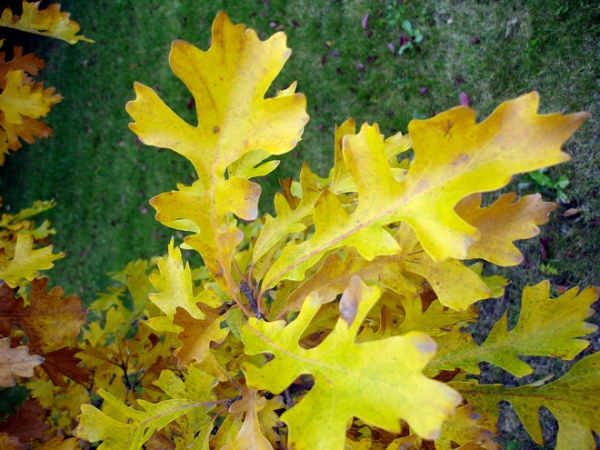
Photo by daryl_mitchell
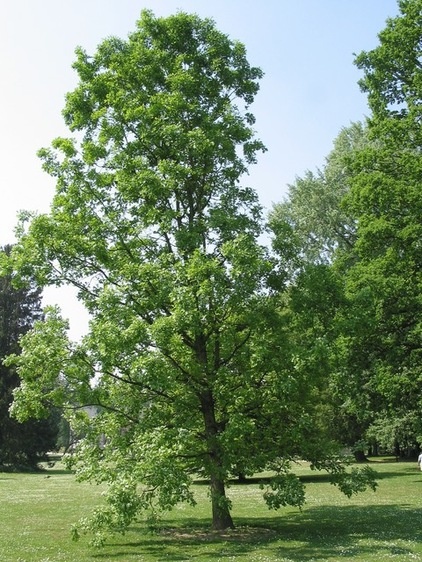
Bur Oak
(Quercus macrocarpa)
Native from Saskatchewan to New Brunswick in Canada, and from Montana to Texas and east (except for the Carolinas, Georgia and Florida) in the U.S.
Reaching 60 to 80 feet tall and wide, bur has a wide range and is one of the most adaptable of the oaks. It thrives in dry to medium soil in full sun, but also does fine in a large rain garden setting with proper drainage. The fall color tends not to be showy, but can be a yellowish brown. Bur is also the most northern of our oaks; in the more northern regions, it tends to become shorter and shrubby. Like golf-ball-sized acorn? Bur oak has the largest of our native oaks.
Photo by Jean-Pol Grandmont, Wikimedia Commons
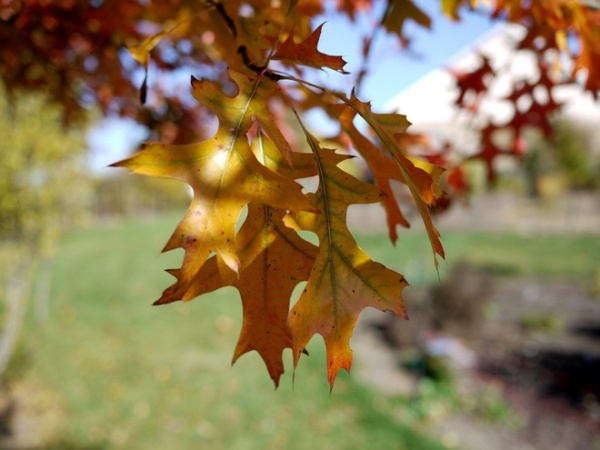
Photo by F. D. Richards
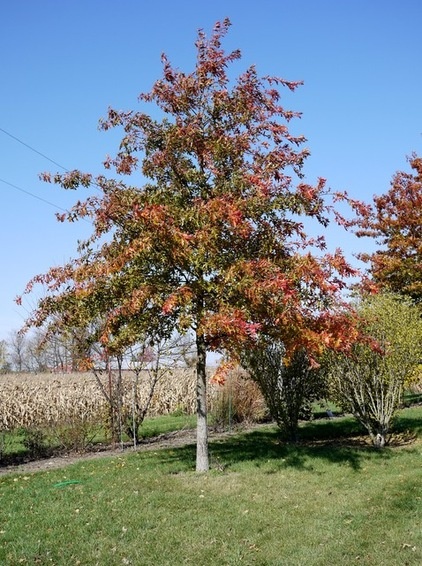
Shumard Oak, or Southern Red
(Quercus shumardii)
Native from Kansas east to Pennsylvania and south to Texas and Florida
Highly tolerant of urban areas and a perfect street tree, Shumard oak will reach 40 to 60 feet tall and 30 to 40 feet wide, opening up as it ages. Keep in mind that these size ranges reflect optimal siting and reflect geographic location — a tree in the north will be shorter than one in the south. Shumard prefers dry to medium soil in sun, but can also do well in a rain-garden-type location. Its red fall color comes later than that of most oaks.
Photo by F. D. Richards
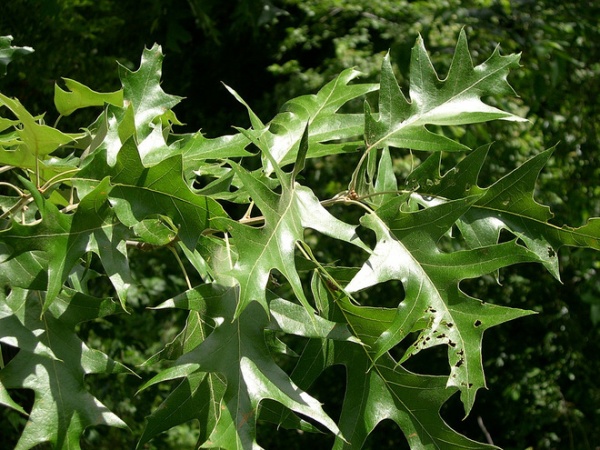
Photo by Jason Sturner
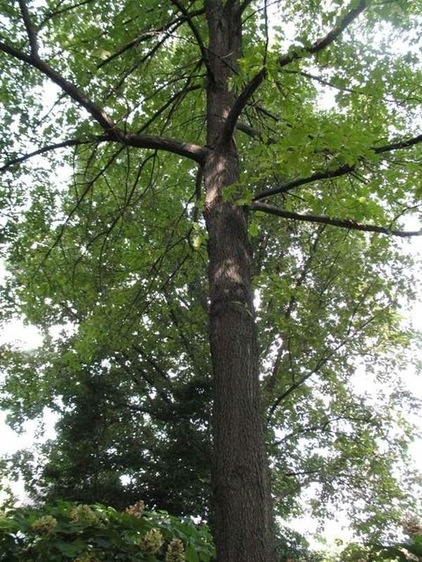
Black Oak
(Quercus velutina)
Native from Minnesota south to Texas and east, from Maine to Florida
While preferring a moist, acidic, well-drained soil, black oak can grow in a range of conditions. At 40 to 60 feet tall and wide, it is about in the midrange for oak sizes and tends to have an open, asymmetrical growth habit. It produces a large acorn crop every two to three years, so you don’t have to bring out the buckets every year.
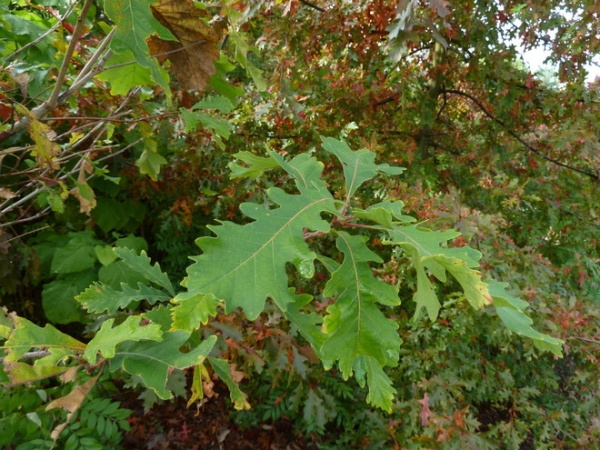
Photo by Wendy Cutler
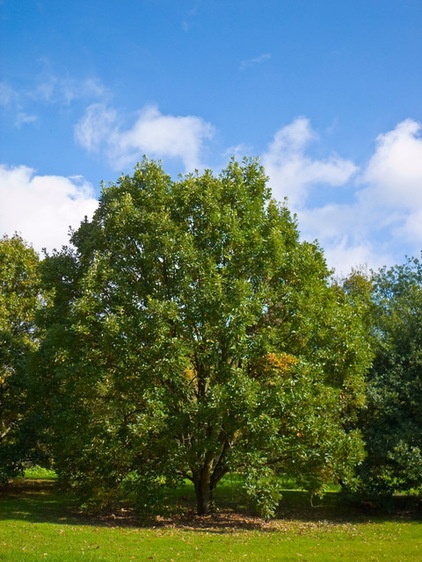
Swamp White Oak
(Quercus bicolor)
Native from Minnesota south to Mississippi and east to the coast (except Georgia and Florida)
This white oak is unique for the dark top surface of its leaves and a silvery, almost white underside. Reaching 50 to 60 feet tall and wide, it prefers a medium to wet soil; it grows in the wild along swamp edges, in lowlands and in floodplains. It does show fairly decent drought tolerance once established. The fall color is yellow to reddish purple.
Photo by Willow, Wikimedia Commons
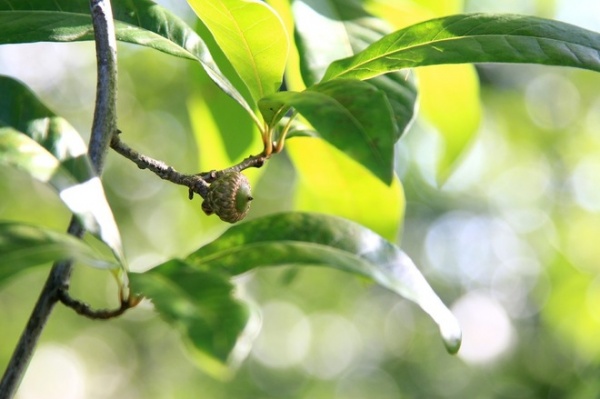
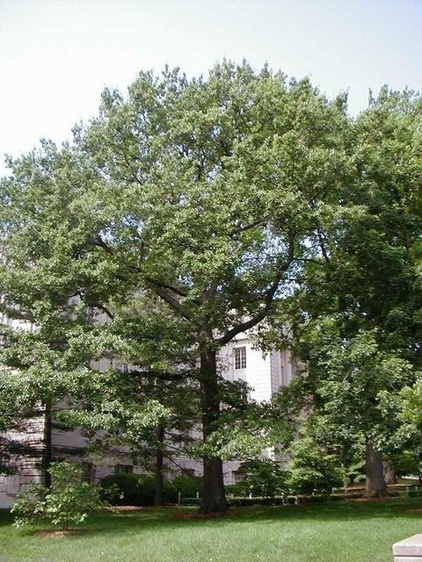
Shingle Oak
(Quercus imbricaria)
Native from New York west to Iowa, south into Kansas and Oklahoma, and east to Georgia
Not surprisingly, given its common name, shingle oak was used by pioneers to make roof shingles. Shingle oak grows to 60 feet tall and wide and loves a rich, moist medium soil — but again, once established it’s adaptable to a variety of locales. In fact, shingle oak is one of the easier-to-grow oaks and likes a city life. The canopy is cone shaped, and the acorns do not ripen until the second year. Shingle oak’s atypical lance-shaped leaves turn yellow-brown to red-brown and persist through winter, making it a good candidate for a winter windbreak.
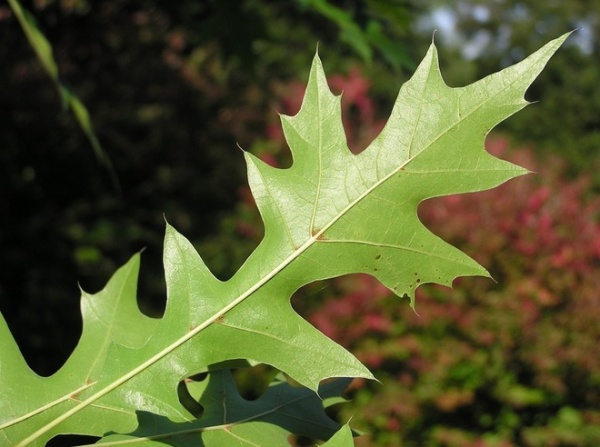
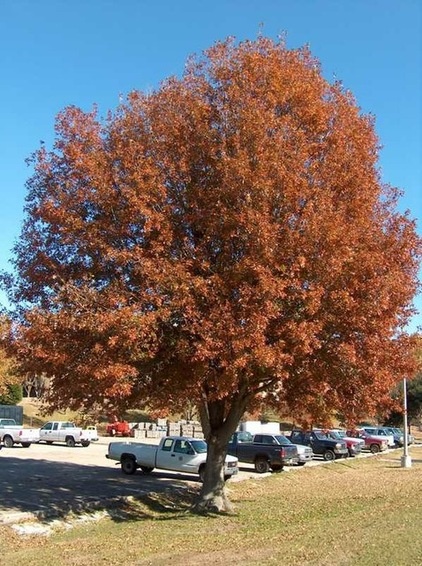
Nuttall Oak
(Quercus texana; formerly Quercus nuttallii)
Native to parts of the South, from Texas north to Illinois and east to Kentucky
Nuttall oak grows wild in heavy, wet bottomland soils along rivers and in floodplains. With a mature size of 50 to 80 feet tall and 40 to 60 feet wide, it is certainly another tree that needs some breathing room for best ornamental shape. The leaves are more deeply lobed than those of most other oaks and have a good red to orange color in autumn.
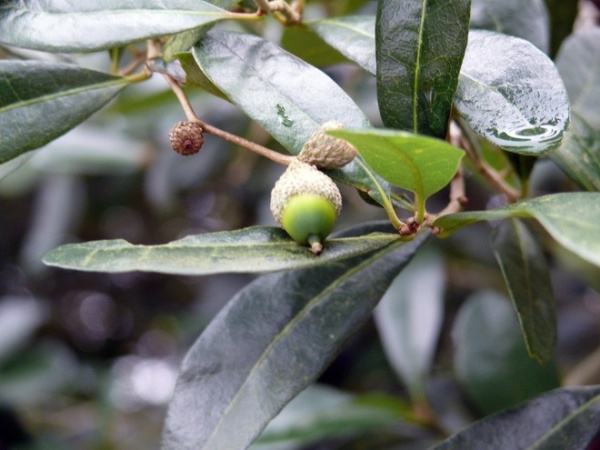
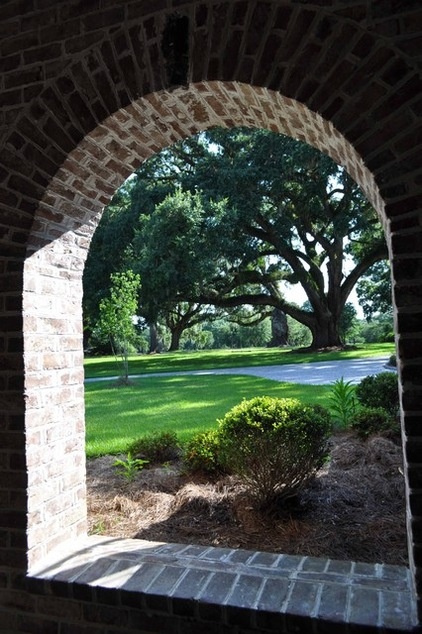
Southern Live Oak
(Quercus virginiana)
Native along the East Coast from Virginia into Florida and the Florida Keys, along the Gulf Coast into Texas
You’ll be most familiar with southern live oak when you think of Spanish moss dangling from its limbs.
This oak reaches 60 feet tall in ideal conditions and a whopping 80 to 100 feet wide. Drought, high winds and urban life are just some of its tolerances. It needs only a light watering once it’s established and grows best in full sun.
See how to grow southern live oak
Tell us: Do you have a favorite oak? Which oaks grow well for you, and what wildlife do you see using them throughout the year?












